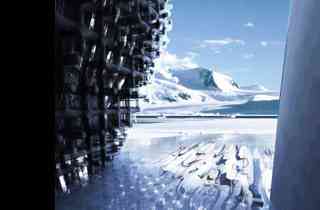If you visit Antarctica right now, you won’t find too many buildings. Sure, there are plenty of research stations (the largest, McMurdo, has some 85 structures) and even a few historic century-old shelters built by some of the continent’s earliest explorers. But will the frozen landscape always remain relatively untouched? Hani Rashid, head of his eponymous studio at the IoA University of Applied Arts Vienna, doesn’t think so. For the 15th Venice Biennale of Architecture, he and his team have devised an exhibition for the Antarctic Pavilion titled “Antarctica: Re-Cyclical,” which investigates the possibilities of Antarctic buildings a century into the future. Tackling ecological issues the world currently faces—for instance, mass consumption of precious resources—Rashid and his team have imagined the types of structures that might need to be built on the remote continent, presenting them as holographic images at the pavilion. The project is just one piece in a bigger Antarctic puzzle: Rashid is one of the participants invited to take part in the first Antarctic Biennale, an expedition led by Russian artist Alexander Ponomarev that seeks to “pursue an expanded Antarctic imaginary” through dialogue between artists , thinkers, and scientists on the continent. Here, we take a look at some of Studio Hani Rashid’s proposals for what the future of Antarctica might hold. Through July 31; antarcticpavilionom

Antarctic Contiguous City
Mary Denman, Mathias Juul Frost, Fady Haddad This proposed research center would provide all amenities for its inhabitants without disrupting the thriving ecosystem found both above and below the ice.

Antarctica Energy Production
Angelica Lorenzi, Alexander Nanu, Dennis Schiaroli Built from biodegradable, 3-D–printed materials, this energy center would take advantage of Antarctica’s high winds.

Bioprospecting Station Antarctica
Lenka Petráková This floating research structure powered by solar energy would house drones that collect and catalogue biomaterial in Antarctica.

Leave a Reply